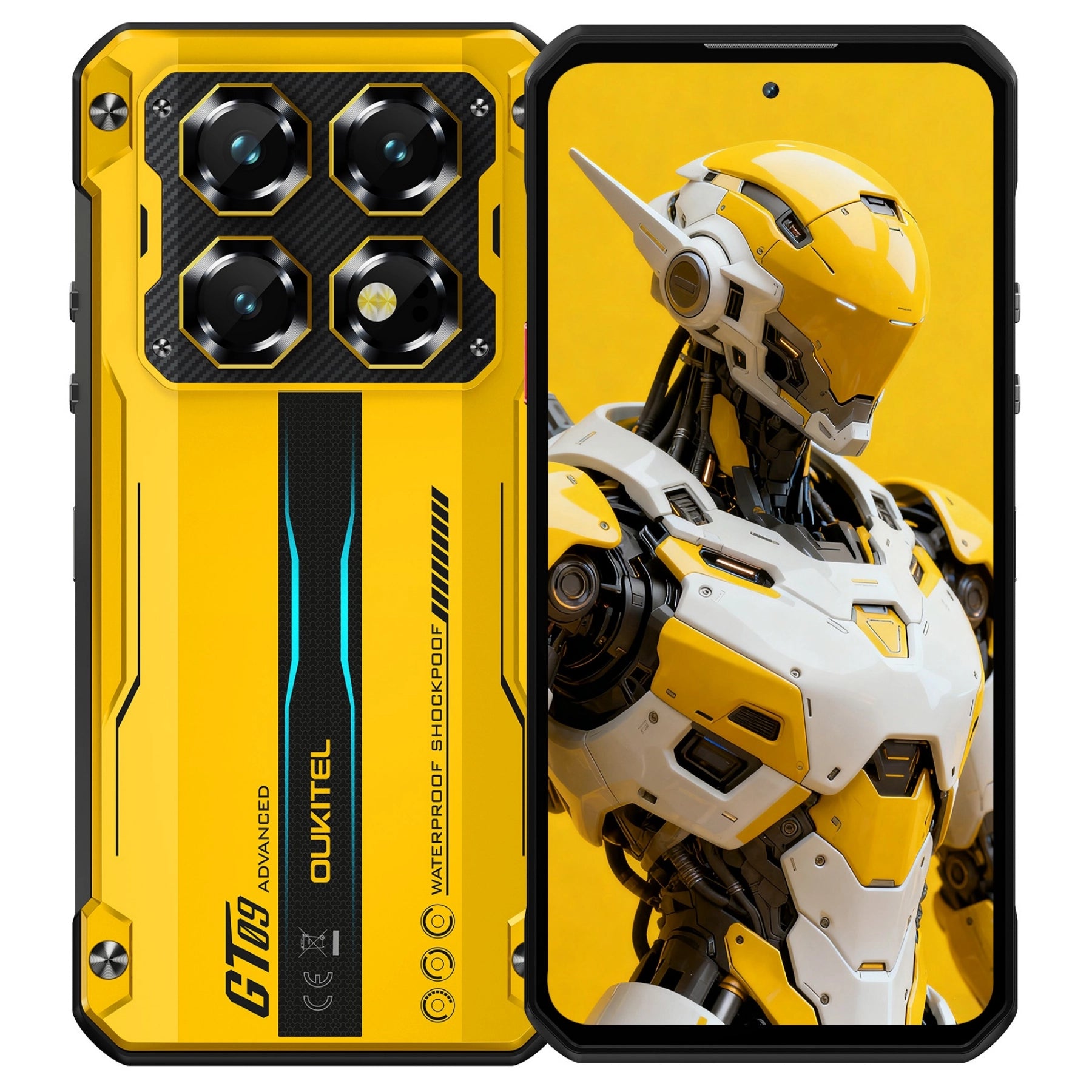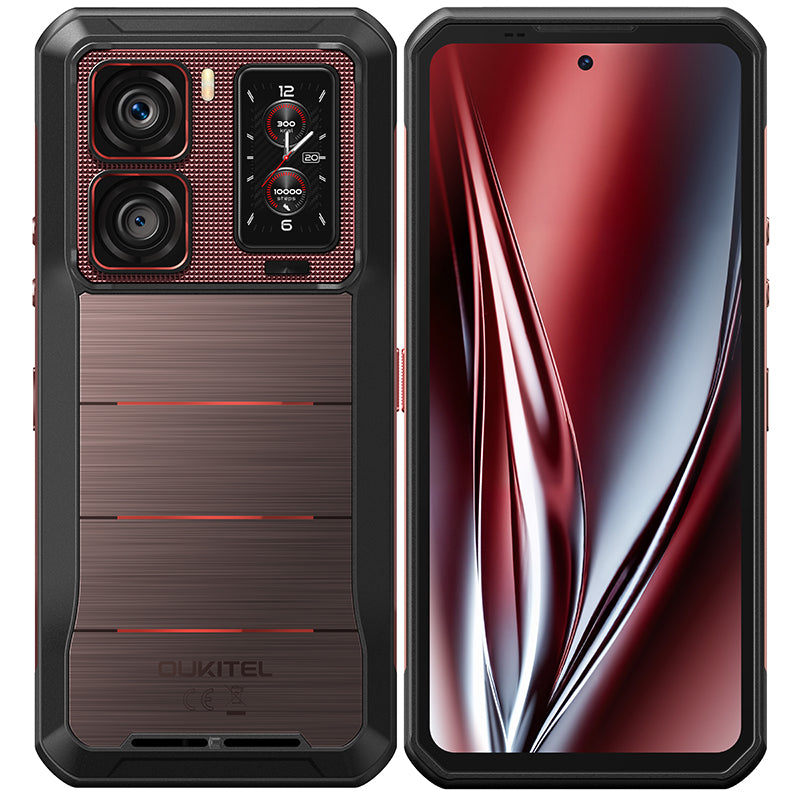In a world where connectivity and navigation go hand in hand, the rugged phone 5G has become indispensable for professionals, adventurers, and field operators alike. Not only must a rugged 5G device endure drops, dust, water, and shock, it must also deliver pinpoint navigation via multiple GNSS systems—GPS, GLONASS, Galileo, BeiDou.
Together, these capabilities transform a rugged 5G phone from a sturdy backup into a mission-critical tool. In this article, we'll break down why multi-satellite support is essential, how it ties into durable design, and what to look for when choosing a rugged 5G device in 2025.
We'll also highlight a strong candidate from OUKITEL’s lineup to illustrate how today’s rugged 5G phones balance robustness with advanced satellite navigation.
Why Multi-GNSS Support is Non-Negotiable
When your work or trip takes you off the grid—through forests, in dense urban cores, or across remote job sites—the reliability of your navigation hardware is as important as battery life or waterproofing. Most modern rugged devices support multiple navigation systems (GNSS), such as:
- GPS (Global Positioning System): The U.S. system that provides baseline global coverage.
- GLONASS: Russia’s satellite constellation; helps fill in gaps when GPS visibility is blocked.
- Galileo: Europe’s precision navigation system, often offering tighter accuracy under good coverage.
- BeiDou: China’s system, increasingly usable globally, especially in East Asia regions.
Using more than one GNSS simultaneously enhances fix accuracy, decreases the time to lock, and improves performance under canopy, in mountain valleys, and between buildings. As one analysis notes, combining GNSS systems ensures fewer dropouts and better reliability—vital when your phone is also your map, your survey tool, and your safety link.
For a rugged 5G phone, combining multi-band cellular support and multi-GNSS support ensures you stay not just connected, but precisely located, even when satellite visibility is challenged.
Core Features of a Rugged 5G Phone in 2025

To call a device a true rugged 5G phone, it needs more than just IP ratings and a 5G radio. Below are the features that separate gimmicks from gear you can rely on in the field.
1. Durability Standards
- Ingress protection: Target IP68 for immersion and IP69K for high-pressure spray. Many rugged 5G phones now carry both.
- MIL-STD-810H or equivalent: This U.S. DoD standard covers real-world hazards such as shock, vibration, high/low temperature cycles, humidity, and drop testing.
- Durable materials, reinforced corners, raised bezels, and sealed port covers also contribute to resilience.
2. 5G Cellular Connectivity and Proper Bands
- The device must support 5G NR bands appropriate for your region (T-Mobile, Verizon, etc.).
- Also ensure broad LTE band support so fallback connectivity remains strong where 5G is weak.
3. Multi-GNSS Navigation
- Support for GPS + GLONASS + Galileo + BeiDou ensures robust positioning.
- Dual-band GNSS (e.g. L1 + L5) further improves accuracy when conditions are challenging.
4. Long Battery and Efficient Power Use
- Batteries of 8,000 mAh or more are now common in rugged devices, with many pushing well above 10,000 mAh.
- Features like reverse charging (so your phone can charge other devices) also boost utility in the field.
5. Field Usability
- Glove/wet touch mode and Smart Key for PTT, flashlight, or camera.
- Bright display, strong speakers, and solid microphone to cut through outdoor noise.
- Durable accessories and repair support (mounts, screen protectors).
6. Up-to-Date Software
- Rugged phones should ship with or support Android 15. That ensures better security, power management, and future compatibility.
When a device meets all these criteria, you can call it a rugged phone 5G—not just a rugged phone with old connectivity.
Example Device: OUKITEL WP200 Pro as a Rugged 5G Navigation Workhorse

To illustrate a real instance of those features in action, let’s look at how the OUKITEL WP200 Pro stacks up.
Durability & Protection
The WP200 Pro is built to withstand immersion, spray, and impacts thanks to IP68/IP69K ingress protection and MIL-STD-810H drop and vibration resilience. This ensures that the device can undergo harsh environmental conditions—whether it’s rain, mud, rough terrain, or industrial sites—without failure.
5G and Cellular Compatibility
As part of the rugged 5G class, the WP200 Pro includes support for modern 5G bands. That ensures fast data connectivity in locations where 5G is available, while LTE bands provide fallback in less covered zones. For professionals who must upload large files, maps, or updates, 5G support is significantly more than a luxury; it’s a workflow enabler.
Multi-GNSS Performance
Though specific pages vary, OUKITEL’s rugged models often support GPS + GLONASS + Galileo + BeiDou. For example, the WP 200 Pro model is explicitly listed with GPS, GLONASS, BeiDou, and Galileo support. While not every variant is confirmed publicly, the brand’s rugged navigation support is well-established. Having all four systems ensures accurate positioning even under partial sky views or in obstructed environments.
Battery and Field Features
With a 8800mAh battery, rapid charging, and reverse charging capabilities, the WP200 Pro can last long shifts and even power small accessories. Combined with field-use features (glove mode,, waterproofing), this is a tool phone—not just a rugged backup.
Software Support
The WP200 Pro is part of OUKITEL’s push toward Android 15, ensuring modern software, security updates, and compatibility with the latest apps and enterprise tools.
Taken together, the WP200 Pro is a prime example of a rugged 5G phone optimized for field navigation, connectivity, and durability. In addition, Its detachable Bluetooth earphones are uniquely integrated and can even function as a smartwatch — giving you hands-free communication and real-time health tracking wherever the job takes you.
How to Choose a Rugged 5G Phone with GNSS
|
Priority |
What to Inspect |
Why It Matters |
|
Navigation Accuracy |
Support for GPS + GLONASS + Galileo + BeiDou |
More satellites = better fixes in tough terrain |
|
Cellular Compatibility |
5G NR + broad LTE bands |
Ensures high-speed data and fallback coverage |
|
Durability Specs |
IP68, IP69K, MIL-STD-810H with stated drop heights |
Validates real-world ruggedness |
|
Battery & Charging |
≥ 8-10,000 mAh, fast charging, reverse charging |
Field usage demands long uptime |
|
Field Usability |
Glove mode, Smart key(s), bright screens, loud audio |
Makes daily tasks simpler and safer |
|
Software Version |
Ships with or supports Android 15 |
For security, app support, and long device life |
When evaluating options, don’t just scan headlines; dig into the spec sheets and see which satellite systems are supported, what 5G bands the phone includes, and how many meters drop protection is claimed. These details make the difference between a rugged phone that fails when you need it most and one that becomes a trusted daily instrument.
Frequently Asked Questions
What exactly is a “rugged phone 5G”?
It’s a device that combines true durability (IP68/IP69K, MIL-STD testing) with modern 5G cellular connectivity and comprehensive GNSS support (GPS, GLONASS, Galileo, BeiDou). It’s not just tough—it’s connected and precisely navigable.
Do all rugged 5G phones support all four satellite systems?
Not necessarily—but the better ones do. Support for GPS plus multiple additional systems (GLONASS, Galileo, BeiDou) is now common in high-end rugged models, significantly improving navigation reliability under tough conditions.
Why is Android 15 important in 2025?
Android 15 offers updated security, better power management, compatibility with newer enterprise tools and apps, and longer usable lifespan. A device stuck on older Android versions may miss critical updates or fall behind in capability.
Can a rugged 5G phone also work underwater?
Only to a point. IP68 covers immersion in controlled conditions; IP69K covers spray. Neither guarantees indefinite waterproofing in all scenarios. Seals can degrade over time. Always test after exposure if it’s mission-critical.
Is more battery always better for rugged 5G phones?
Bigger battery means longer runtime, but also more weight and larger device size. Balance battery capacity with weight, thickness, and how much runtime you truly need. Also consider fast charging and reverse charging features.
Conclusion
If you’re shopping for a rugged phone 5G in 2025, navigation reliability is just as critical as drop resistance and waterproofing. Your ideal rugged 5G phone should combine durability, multi-GNSS support (GPS, GLONASS, Galileo, BeiDou), and relevant 5G/LTE bands so that you stay connected and precisely located no matter where work or adventure takes you.
The OUKITEL WP200 Pro is a clear example of how these demands coalesce into a powerful field tool—durable, well-connected, and navigation-savvy. Using the decision matrix above, you can evaluate any rugged 5G phone in today’s market to ensure it meets your demands for real-world performance, not just marketing claims.














